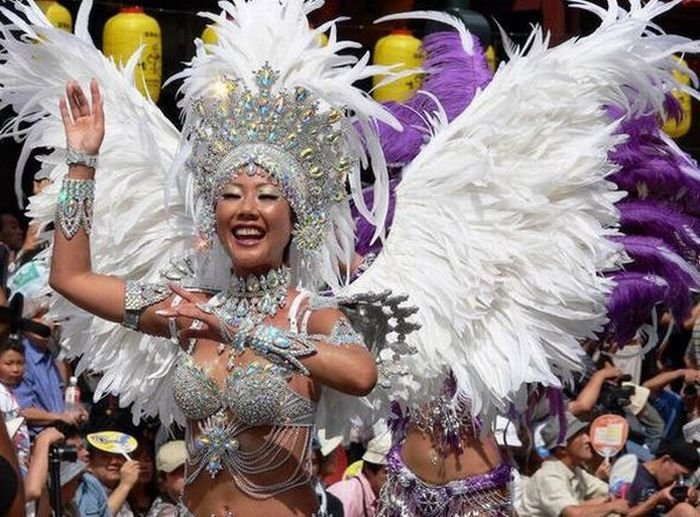|
|
Samba Carnival, Japan
|
From year 2000, there were some artists who were looking to reconnect most popular traditions of samba. Were the cases of Marquinhos of Oswaldo Cruz, Teresa Cristina among others, that contributed to the revitalization of the region of Lapa, in the Rio de Janeiro. In São Paulo, samba resumed the tradition with concerts in Sesc Pompéia Club and also by the work of several groups, including the group Quinteto em Branco e Preto who developed the event "Pagode da Vela" ("Pagoda of Sail"). This all helped to attract many artists from Rio de Janeiro, who shows, established residence in neighborhoods of the capital paulistana.
In 2004, the minister of culture Gilberto Gil submitted to the Unesco the application of damping off of samba as Cultural Heritage of Humanity in category "Intangible Goods" by Institute of National Historical and Artistic Heritage. In the following year, the samba-de-roda of Baiano Recôncavo was proclaimed part of the Heritage of Humanity by Unesco, in the category of "Oral and intangible expressions."
In 2007, IPHAN gave the official record, the Book of Registration of Forms of Expression, the matrices of the samba of Rio de Janeiro: samba de terreiro, partido-alto e samba-enredo. Samba is a Brazilian dance and musical genre originating in African and European roots. The word is derived from the Portuguese verb sambar, meaning "to dance to rhythm." It is a worldwide recognized symbol of Brazil and the Carnival and is the national dance of Brazil. Considered one of the most popular Brazilian cultural expressions, the samba has become an icon of Brazilian national identity. The Bahian samba de roda (dance circle), which became a UNESCO Heritage of Humanity in 2005, was a basis of the samba carioca, the samba that is played and danced in Rio de Janeiro.
|
|









